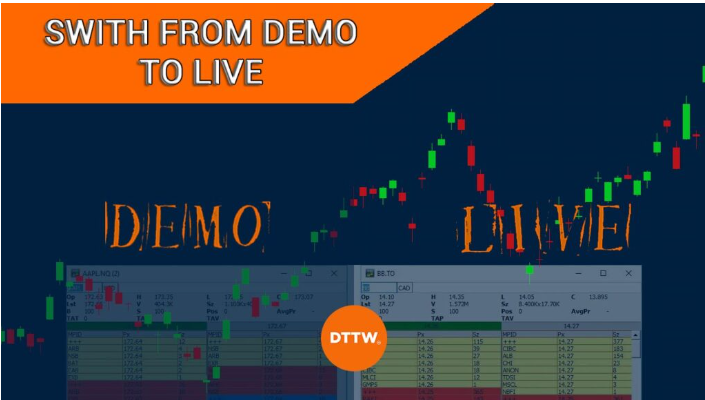How to Transition from Demo to Live Trading Successfully
Trading in a demo account is a great way to practice strategies and build confidence without financial risk. However, leaping to live trading is a completely different challenge. Many traders struggle with the transition because of emotional pressure, real capital at risk, and execution differences. In this post, we’ll explore the best ways to smoothly transition from demo to live trading while minimizing risks and increasing your chances of success.
1. Treat Your Demo Trading Like Real Trading
Common Mistake: Many traders approach demo trading carelessly, taking excessive risks that they wouldn’t take with real money. This creates bad habits that carry over to live trading.
How to Avoid It:
- Use the same amount of capital in your demo account as you plan to use in live trading.
- Stick to realistic leverage and lot sizes instead of placing oversized trades just because it’s risk-free.
- Follow a structured trading plan with clear entry and exit rules.
2. Ensure You Are Profitable in Demo Trading First
Before going live, make sure you have a consistent track record of profitable trades in your demo account. This doesn’t mean you need to win every trade, but your overall strategy should show positive returns over time.
Key Benchmarks Before Going Live:
✅ At least 3 to 6 months of consistent profitability.
✅ A solid risk management strategy (e.g., risking only 1-2% per trade).
✅ A well-tested trading strategy that works in different market conditions.
3. Start Small With Your First Live Trades
Even if you were highly successful in demo trading, live trading is different because emotions come into play. The safest way to transition is by starting with small positions.
How to Do It:
- Use micro-lots (0.01 lot size) to test your strategy in real-market conditions.
- Risk only a small percentage of your capital (e.g., 0.5-1% per trade).
- Slowly increase your trade sizes as you gain confidence and experience.
4. Control Your Emotions
Fear and greed become significant factors in live trading. The psychological aspect of trading is often the biggest challenge when transitioning from demo to live trading.
How to Stay Emotionally Disciplined:
- Accept that losses are part of the game—don’t let one bad trade affect your decision-making.
- Stick to your trading plan and don’t make impulsive trades.
- Take breaks if you feel stressed or overwhelmed.
5. Manage Your Risk Wisely
A major reason traders fail after moving to live trading is poor risk management.
Risk Management Best Practices:
✅ Use stop-loss orders on every trade.
✅ Never risk more than 2% of your account on a single trade.
✅ Avoid overleveraging—stick to reasonable leverage levels (e.g., 1:10 or 1:20).
6. Be Aware of Execution Differences
Execution in live trading is not always the same as in a demo account. Factors like slippage, spreads, and order fills can impact your trades.
What to Expect in Live Trading:
- Slippage: Prices may change between the time you place an order and when it gets executed.
- Wider spreads: Some brokers have tighter spreads in demo accounts than in live trading.
- Order rejections: Unlike demo accounts, where all trades execute instantly, live trading can have delays or rejections.
How to Adapt:
- Start with low-risk trades to get used to real-market execution.
- Choose a reliable broker with good order execution and tight spreads.
7. Keep a Trading Journal
Keeping track of your trades helps you identify mistakes and improve your strategy over time.
What to Include in Your Journal:
- Entry & exit points
- Trade size and risk-reward ratio
- Market conditions at the time of trade
- Emotions before, during, and after the trade
- Lessons learned
By regularly reviewing your journal, you can fine-tune your approach and improve your trading performance.
8. Avoid Overtrading and Revenge Trading
Many new traders try to recover losses quickly by making impulsive trades. This often leads to even bigger losses.
How to Prevent Overtrading:
- Set a daily and weekly trade limit.
- Take a break after three consecutive losing trades to avoid emotional decisions.
- Stick to high-quality trade setups rather than chasing every market move.
9. Be Patient – It’s a Marathon, Not a Sprint
The goal of trading is long-term profitability, not getting rich overnight.
Mindset for Success:
- Accept that losing trades are part of the process.
- Stay disciplined and consistent with your strategy.
- Focus on gradual improvement rather than making quick money.
Final Thoughts on How to Transition from Demo to Live Trading Successfully
Transitioning from demo to live trading is a big step, but by following these strategies, you can make the shift smoothly and successfully. Start small, manage risk, control your emotions, and treat trading as a long-term journey.



